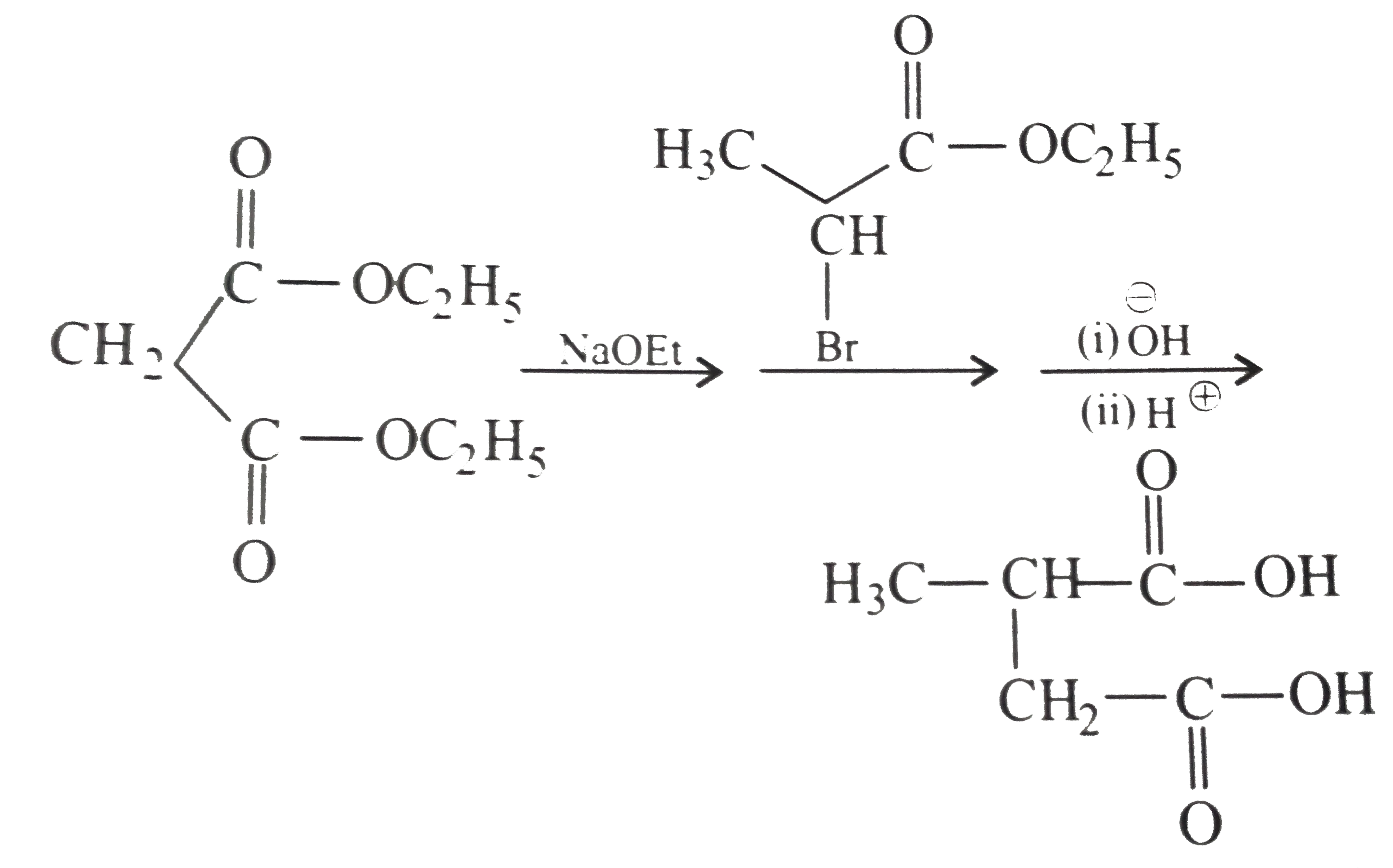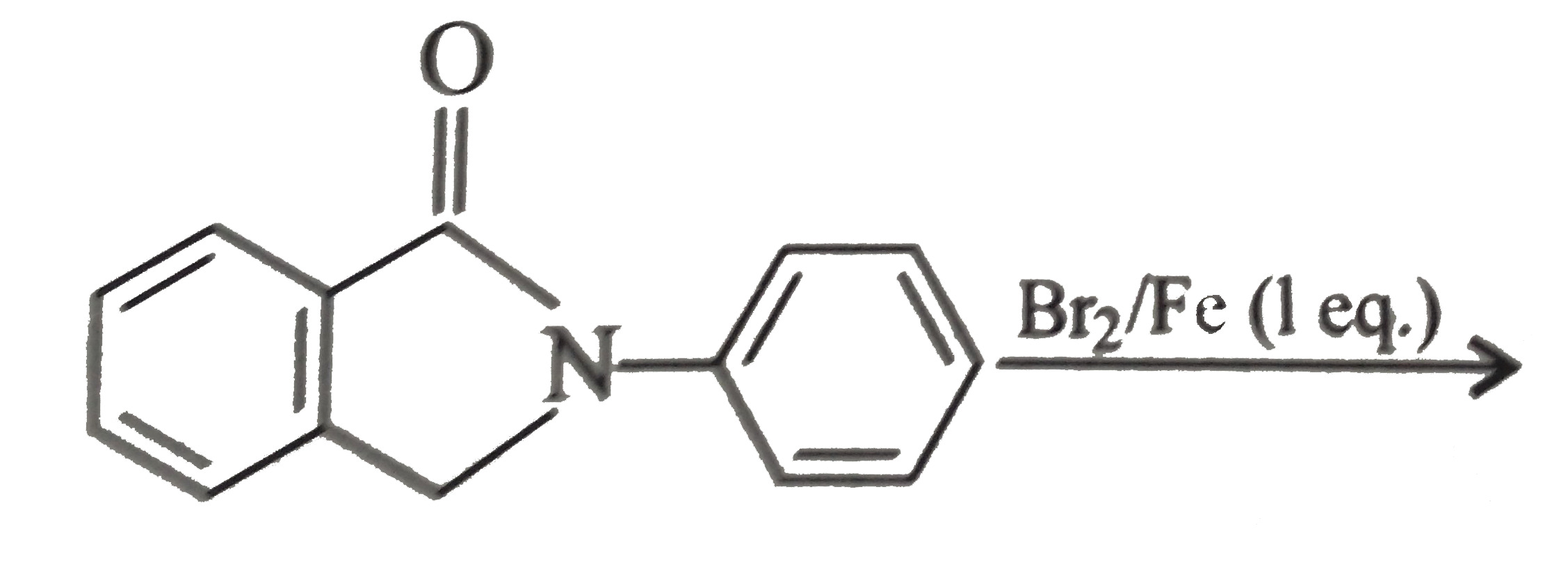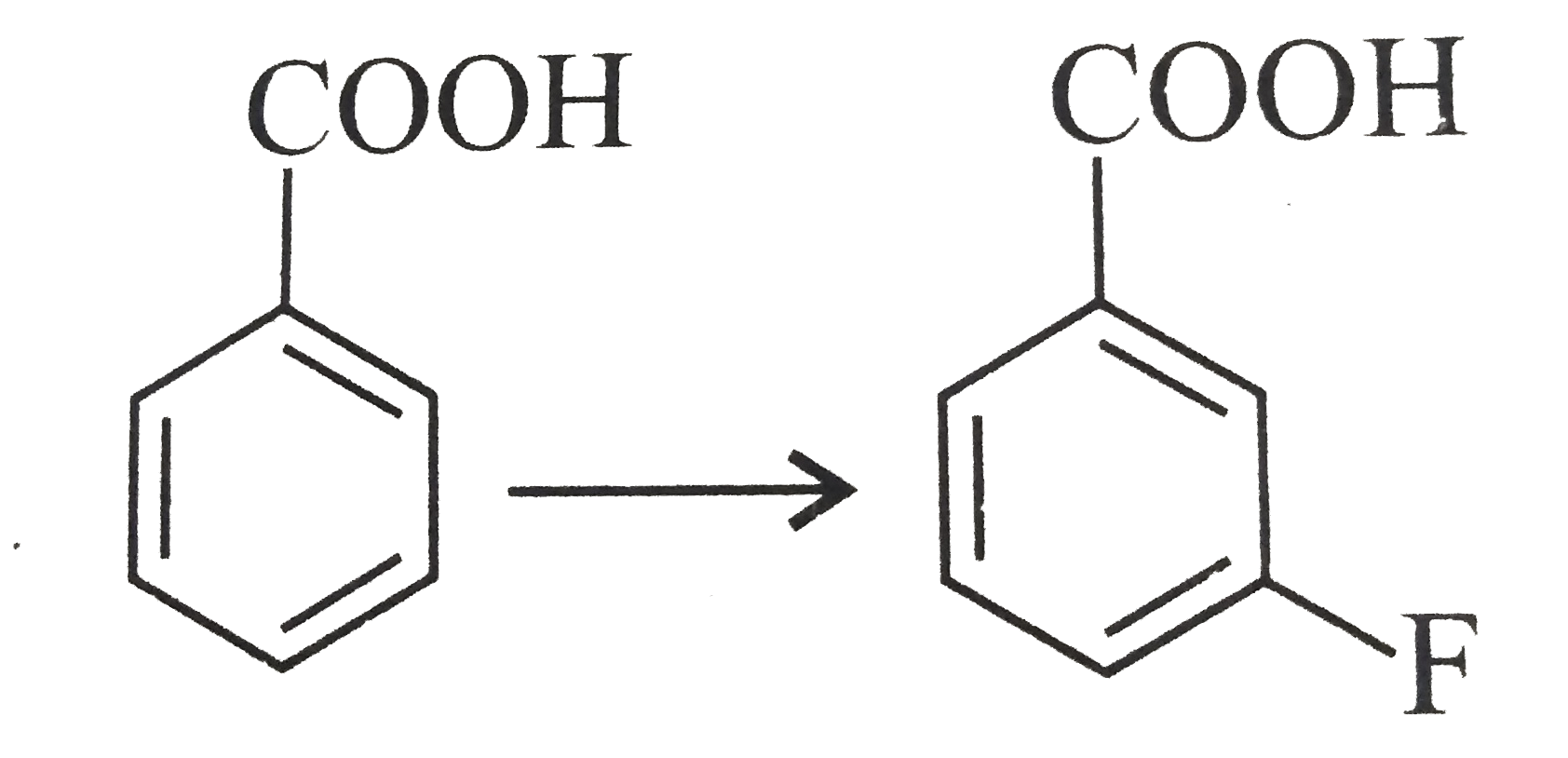Complete Solutions to Exercises Archives (Analytical And Descriptive) of chapter CARBOXYLIC ACIDS AND THEIR DERIVATIVES of Class 12 book with complete answers and questions
| Class 12 | CHEMISTRY |
| Chapter | CARBOXYLIC ACIDS AND THEIR DERIVATIVES |
| CENGAGE CHEMISTRY | Exercises Archives (Analytical And Descriptive) |
| Number Of Questions | 34 |
| Academic Year | 2023-24 |
Write the chemical eqution to show what happens when 'Ethyl acetate is treated with sodium ethoxide in ethanol and the reaction mixture is acidified'.
View SolutionState with balanced equation what happens when 'Acetic anhydride reacts with phenol in the presence of a base'.
View SolutionGive reasons for the following in one or two sentences.
'Acetic acid can be halogenated in the presence of `P` and `Cl_2`, but formic acid cannot be halogenated in the same way'.
View SolutionWrite down the reactions involved in the preparation of the following using the reagents indicated against in parenthesis.
'Propionic anhydride from propionaldehyde'.
`[AgNO_3, NH_4 OH, P_2 O_5]`.
View SolutionA certain hydrocarbon `(A)` was found to contain `85.7 %` carbon and `14.3 %` hydrogen. This compound consumes `1` molar equivalent of hydrogen to give a saturated hydrocarbon. What is the empirical formula of compound?
View SolutionGive reason in one or two sentences for the following : 'Formic acid is a stronger acid than acetic acid'.
View SolutionArrange the following in order of their increasing ease of hydrolysis :
`CH_(3) COOC_(2) H_(5), CH_(3) COCl, (CH_(3) CO)_(2) O, CH_(3) CONH_(2)`.
View SolutionComplete the following with appropriate structures :
`(CH_(3) CO)_(2) O overset(C_(2)H_(4) OH)rarr CH_(3) COOH + ?`.
View SolutionA liquid `(X)` having a molecular formula `C_(6) H_(12) O_(2)` is hydrolysed with water in the presence of an acid to give a carboxylic acid `(Y)` and an alcohol `(Z)`. Oxidation of `(Z)` with chrome acid gives `(Y)` . What are the structures of `(X), (Y)`, and `(Z)` ?
View SolutionWrite the balanced equations for the following reaction :
'Acetamide is reacted with bromine in the presence of potassium hydroxide'.
View SolutionAn organic compound `(A)` on treatment with acetic acid in the presence of sulphuric acid produces an ester `(B)`. `(A)` on mild oxidation gives `( C), ( C)` with `50 %` potassium hydroxide followed by acidification with dilute hydroxide acid generates `(A)` and `(D) ,(D)` with phosphorus pentachloride followed by reaction with ammonia gives `(E) , (E)` on dehydration produces hydrocyanic acid. Identify the compounds `(A), (B), (C), (D)`, and `(E)`.
View SolutionGive reasons for the following :
'Carbon-oxygen bond lengths in formic acid aer `1.23 Å` and `1.36 Å` and both carbon-oxygen bonds in sodium formate have the same value, i.e., `1.27 Å`.
View SolutionConversion of Ethanoic acid to mixture of methanoic acid and diphenyl ketone
View SolutionThe sodium salt of a carboxylic acid, A, was produced by passing a gas, B, into an aqueous solution of caustic alkali at an elevated temperature and pressure. A on heating in presence of sodium hydroxide followed by treatment with sulphuric acid gave a dibasic acid C, A sameple of 0.4 g of C on combustion gave 0.08g of water and `0.39g` of carbondioxide. The silver salt of acid weihin 1g on ignition yielded 0.71g of silver as residue. Identify A, B and C.
View SolutionIn the following, identify the compounds/reaction conditions represented by the alphabets `(A), (B)`, and `( C)`.
`H_(3) C-CH=CH-CHO overset(NaBH_4)rarr (A) overset (HCl) underset(ZnCl)rarr (B) overset(KCN) underset(H^(+))rarr ( C)`.
View SolutionArrange the following as stated :
'Increasing order of acidic strength'.
`ClCH_(2) COOH, CH_(3) CH_(2) COOH, ClCH_(2) CH_(2) COOH, (CH_(3))_(2) CHCOOH, CH_(3) COOH`.
View SolutionIn the following identify the compounds/reaction conditions represented by the alphabets `(A), (B)`, and `( C)` :
`C_(6) H_(5) COOH overset(PCl_5)rarr (A)overset(NH_(3) rarr (B) overset(P_2 O_5)rarr C_(6) H_(5) CN overset(H_2 //Ni)rarr (C)`.
View SolutionComplete the following sequence of the reactions with approprite structures.
(i)
View SolutionIdentify the major product in the following reactions :
(i)
(ii) `C_(6) H_(5) COOH + CH_(3) MgI rarr ? + ?`.
View SolutionIn the following reactions, identify the compounds `A, B, C` and `D`.
(i) `PCl_5 + SO_2 rarr A + B`
(ii) `A + MeCOOH rarr C + SO_2 + HCl`
(iii) `2C + Me_2 Cd rarr 2D + CdCl_2`.
View SolutionPredict the major product in the following reaction :
`C_(6) H_(5)-CH_(2) CO_(2) CH_(3) overset((i) CH_(3) MgBr(Excess)) underset((ii) H^(oplus))rarr`.
View SolutionHow will you bring about the following conversion ?
'Benzamide from nitrobenzene'.
View SolutionGive reason for the following :
'In acylium ion, the structure `R-C -= O^(oplus)` is more stable than `R- overset(oplus) C=O`.
View SolutionWhich of the following carboxylic acids undergoes decarboxylation easily ? Explain briefly.
(i) `C_(6) H_(5) -CO-CH_(2)-COOH`
(ii) `C_(6) H_(5) -CO-COOH`
iii. `C_(6)H_(5)-underset(OH)underset(|)(CH)-COOH` (iv) `C_(6) H_(5) - underset(underset(NH_2) (|))(CH) -COOH`.
View SolutionComplete the following sequence of reactions with appropriate structures.
`CH_(3) -CH_(2) -COOH overset(P and ) underset("Bromide") rarr (A)`
`(A) overset((i) Alc. KOH (excess)) underset((ii) H^(oplus))rarr (B)`.
View SolutionComplete the following giving the structures of the principal organic products.
(i)
(ii) `H_(3) C COCOC_(6) H_(5) + NaOH//H_(3) O^(oplus) rarr (B)`.
View SolutionThe following reaction gives two products. Write the structures of these products.
`CH_(3) CONHC_(6) H_(5) overset(Br_(2)//Fe)rarr`.
View SolutionExplain briefly the formation of products giving the strcutures of the intermediates.
 .
.
View SolutionWhat would be the major product in the following reactions ?
 .
.
View SolutionWrite the structures of products `(A)` and `(B)`
`CH_(3) -overset (O) overset(||) C-overset(18) OC_2 H_5 overset(H_(3) O^(+))rarr (A) + (B)`.
View SolutionFive isomeric p-subsituted aromatic compounds (A) to (E ) with molecular formula `C_(8)H_(8)O_(2)` are given for identifyication. Based on the following observation, give the structures of the compounds.
i. Both (A) and (B) form a silver mirror with Tollens reagent, (B) also gives a positive test with neutral `FeCl_(3)` solution.
ii. (C ) gives positive iodoform test.
iii. (D) is readily extracted in aqueous `NaHCO_(3)` solution.
iv. (E ) on acid hydrolysis gives 1,4-dihydroxy benzene.
Compound (A) is:
View SolutionA racemic mixture of `(+-) 2-pheynl` propanoic acid on esterification with `(+) 2-butanol` gives two esters. Mention the seterichemistry of the two ester produced.
View SolutionA biologically active compound bombykol `(C_(16) H_(30)O)` is obtained from a natural source. The structure of the compound is determined by the following reactions :
(a) On hydrogenation, bombykol gives a compound `(A), C_(16) H_(34) O`, which reacts with acetic anhydride to give an ester.
(b) Bombykol also reacts with acetic anhydride to give another ester, which on oxidation ozonolysis `(O_(3)//H_(2) O_(2))` gives a mixture of butanoic acid, oxalic acid, and `10-hydroxy` decanoic acid.
Determone the number of double bonds in bombykol. Write the strcutures of compounds `(A)` and bombykol. How many geometrical isomers are possible for bombykol ?
View SolutionConvert the following (in not more than three steps):
 .
.
View Solution
Exercises Archives (Analytical And Descriptive) questions and complete solutions for chapter CARBOXYLIC ACIDS AND THEIR DERIVATIVES of CENGAGE CHEMISTRY (ENGLISH) of Class 12
All Exercises from CENGAGE CHEMISTRY Class 12 CHEMISTRY CARBOXYLIC ACIDS AND THEIR DERIVATIVES
- Exercises (Assertion-Reasoning)
- Exercises (Linked Comprehension)
- Exercises (Multiple Correct)
- Exercises (Singlecorrect)
- Exercises (Subjective)
- Exercises Archives (Analytical And Descriptive)
- Exercises Archives (Assertion-Reasoning)
- Exercises Archives (Fill In The Blanks)
- Exercises Archives (Linked Comprehension)
- Exercises Archives (Multiple Correct)
- Exercises Archives (Single Correct)
- Exercises Archives (True/False)
- Illustration
- Solved Examples